A Gallic shrug accompanies Jean Pierre Vittu de Kerraoul’s answer to my question about the number of hyperlocal editions he publishes.
There could be 100, 150 editions of the 23 mastheads in his Sogémedia group, more or less from week to week and depending upon events.
The ‘piece of string’ answer is because digital printing gives him the flexibility to split an edition whenever a local event justifies it. And that’s not counting the ability to send personalised birthday greetings to an individual subscriber… the sought-after ‘audience of one’.
We’d met five years before during an ASEAN Newspaper Printers’ conference in Jakarta and again in Berlin and, finding myself in his region in northern France, I’m back to ask what worked and what he’s learned from the pioneering years of hyperlocal publishing.
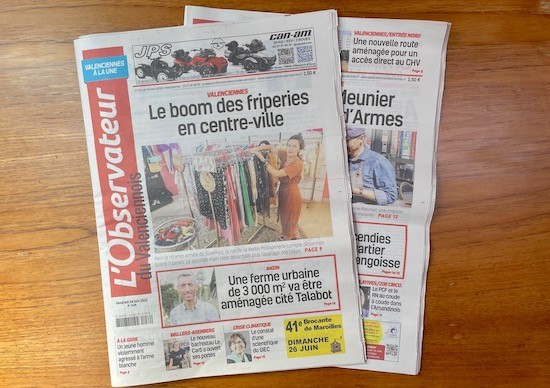
I tell him no-one I know of is making as much use of the potential inkjet web printing gives him, in his case with a Kodak Prosper 6000 back-ended by manrolandGoss’s FoldLine finishing system.
It’s a two-sided coin: The response from readers has been very good, but there’s still a question as to whether advertisers get it; it’s also still hard to put over the message.
“I think our readers appreciate having more information; local news connected to their own life zone and local market,” he says. “For example, during the COVID crisis a lot of news-stands were closed, or opened for only a few hours. In spite of that, we maintained and sometimes increased our sales.
“We were very surprised.”
Audiences who had been confined to their homes, watching the bad news on TV, yearned for local news and when they were allowed to go out of their homes, they were looking for news that could be useful to them.
“A lot of people rediscovered local newspapers,” says de Kerraoul. “We tried to increase the amount of positive news. We also gave front-page prominence to initiatives in smaller cities that had tried to help people, to show solidarity, and readers appreciated this very much.”
He says the COVID period was “very interesting”, because it confirmed that people had no problem with printed newspapers as a format, only with what was written in them. “So if we published the news that was directly concerned with the readers, there was no problem.”
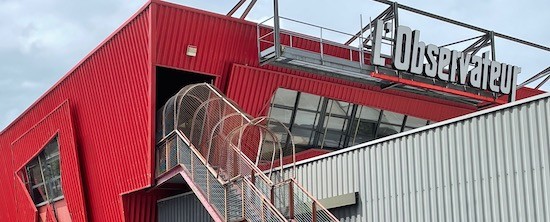
That’s not changed. “Because of digital printing we can split a former edition into three, four, five or even six local editions and we are still doing this, and it’s successful,” he says. “It doesn’t mean we have increased sales by ten per cent, but we maintain them, and sometimes put on one, two, or three per cent, and these days, that’s something.”
This, says de Kerraoul, is the good news, admitting that the concept has been less successful – so far – for advertising. “It works, but not as we hoped.”
Not all of the 23 mastheads are so editionised. L’Observateur may have between 14-16 – “we can create a special edition for 500 copies for an important event” – while others have a single edition or perhaps only three or four.
Sales reps struggle to explain the ‘less is more’ concept of buying a series of hyperlocal quarter pages at €100 apiece, instead of one at €400, and fears his commercial team is not sufficiently motivated to present the concept of four or five inserts for the same amount of money.
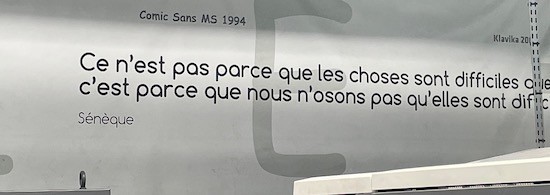
“You can show it on the map, how you have one shop, and maybe 1000 possible clients, and we have an edition of 1200 covering it – but each guy in our team has to explain this to the shops because they’re not accustomed to it,” he says. “So we have to improve our training, and it needs time.
“Everything is a management problem – technology is not the problem.”
I mention the similarity with so-called ‘technology companies’ such as the buy-now-pay-later upstarts… but it takes that customers ‘get’ the concept, and some are clearly struggling with hyperlocal publishing. “We can personalise advertising content, but our team needs to use 100 per cent of the technology’s capability, and now they use perhaps 20 per cent.
“If the content is more personalised, readers will realise very quickly,” says de Kerraoul. “We need to train journalists so that each edition has a story directly concerning each reader. Journalists used to think of a story for 10,000 people, but now they need to write four stories for four groups of 2500 people. It’s more complicated.”
A copy of L’Observateur I had bought in Valenciennes was a good example, its front-page lead announcing the arrival of a new friteur (or chip shop), making a difference to the life of people.
“Of course, we cannot hire more journalists, so we have to explain how to do things differently, forgetting some of what they did, and concentrating on imagination. We say don’t go to any more press conferences, which involve waiting around to see what is on the press release, and is then published everywhere. Concentrate on what you are probably the only journalist to know, and forget the other content.”
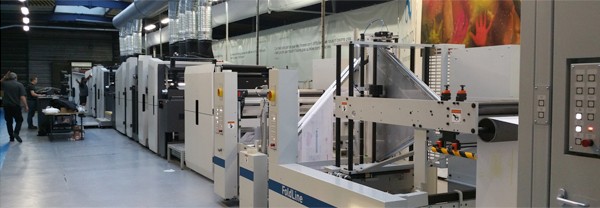
Some see the concept more quickly than others, and de Kerraoul recalls his own days as a journalist, wanting his paper to have all the news in the world. “It’s hard to understand that some important news isn’t to be published,” he says.
Sogémedia’s mastheads do have websites, part free and partly now behind a paywall, but digital and print “don’t hurt each other as we don’t publish the same content”.
He’s optimistic that young people still read printed magazines, though they are “not trained to read newspapers.
“I see sometimes new magazines are successful for young people, which shows they don’t have a problem with the medium,” he says.
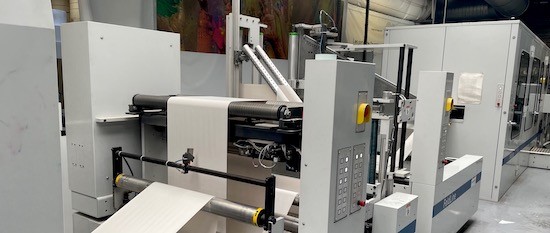
De Kerraoul says there’s “nothing really original” about the software they use, although they probably make more use of features in the Melody editorial system (from Demain un Autre Jour) than most users.
The ability for journalists to work from anywhere, useful during COVID, means content can be easily expanded and substituted. “A lot of publishers have equivalent systems, but maybe we use more of the features it has,” he says.
With perhaps half the readers of some newspapers signed up as subscribers, there’s also an incentive to optimise distribution with an inhouse-developed postage system, exploiting the potential digital print gives them.
An example is the need to get subscriber copies into the post, typically before 6pm. “Some days we publish 10, 12 or even 15 different newspapers, but we can print all the subscribers first, and then all the newsstand copies next, with no plates to change. It’s very easy and impossible with offset,” he says.
As Kodak lifts the inkjet web proposition this month with a new 410 metres-per-minute Prosper 7000 Turbo model, a third faster than its predecessor, de Kerraoul is working his original press harder – printing copies of an Italian daily for readers in Brussels – and has negotiated a smaller increase in the cost of inks. A bonus for digital printers is the absence of plate costs and frugal use of newsprint, two supply components which have been a recent cause of concern for offset newspaper printers.
Back-up comes in the form of a second Kodak line, though the smaller Versamark (below) is not linked directly to the manrolandGoss finishing system.

L’Observateur is one of 23 mastheads in the Sogémedia stable, but holds a special place in the heart of its publisher. Having started a career in journalism working for Japan’s NHK TV network, and then a US scientific and medical publisher, he grasped the opportunity at age 27 to buy the then solely Avesnelles edition – an offset product of eight pages – from the elderly woman who owned it… for just one French franc.
“She wanted to get out, and I was young and unconscious, and step by step, I developed from this one newspaper.”
Would he do it again? De Kerraoul shrugs again: “When you’re crazy, you’re definitely crazy,” he says. “I cannot change myself.”
Peter Coleman




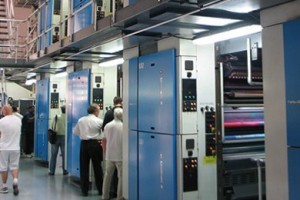


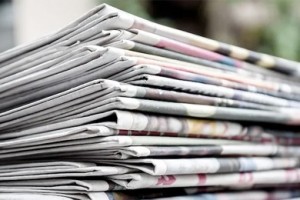
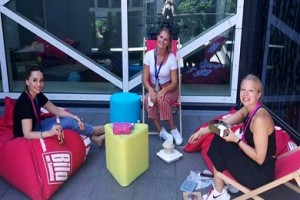






Comments